11 Sep Top 10 Australian Wines
In terms of quality and the sheer scale of production, Australia is an incredibly important wine-producing country. Australia has a reputation for being at the forefront of the new wine ‘revolution’, backed by a highly dedicated and professional industry, including research and development. Both globally and locally, the wine industry has benefited from the technological advancements in wine production. Our country’s contribution to revolutionising vineyard management practices is highly regarded and organisations such as the Australian Wine Research Institute (AWRI) have certainly had a positive impact.
With a huge range of favourable climatic and geographical conditions, the incredibly diverse landscapes in Australia make us one of the most versatile grape growing countries in the world. Wine is produced in all 6 states with the vast majority made in the Southeast, in New South Wales, Victoria and South Australia.
Australia’s wine portfolio is wide ranging and includes wines based on Shiraz, Southern Rhone-style blends, classic fruit aromatics led by Riesling from the Eden and Clare Valleys, exceptional Chardonnay (with or without barrel influence) unpretentious but delicious Hunter Valley Semillon. It also encompasses varieties of complex fortified and dessert wines and world-class sparkling wines.
Top Australian Wines
Our country has played a significant role in the globalisation of wine and many of its brands have a strong international presence. We also have our fair share of well trained and qualified wine professionals who have spread their influence to many corners of the world.
The following is a list of top 10 Australian wines, widely available for under $20:
- 2012 Wickhams Road Sauvignon Blanc, Yarra Valley $19.99
- 2012 Balnaves of Coonawarra The Blend, Coonawarra $19.99
- 2012 De Bortoli Village Pinot Noir $16.99
- 2014 Leo Buring Dry Clare Valley Riesling $14.60
- 2014 Pewsey Vale Riesling, Eden Valley, $15.65
- 2014 La Boheme Act Four Syrah Gamay, Yarra Valley $16.99
- 2011 Tournon Maxime Chapoutier Shiraz, Victoria $15.99
- NV Brown Brothers Prosecco, King Valley $17.99
- 2011 d’Arenberg d’Arry’s original Shiraz Grenache, McLaren Vale $17.99
- NV Yalumba Antique Tawny $18.99
Now that you’ve bought some lovely wines, it’s handy to know how to store them. Here are a few tips for your personal cellar.
Keep It Cool
Heat is a real threat for wine. Temperatures higher than 70° F will age a wine more quickly than is usually desirable. The ideal temperature range is between 45° F and 65° F (and 55° F is often cited as close to perfect), though this isn’t an exact science. As long as you’re opening the bottles within a few years of their release you don’t have anything to worry about.
But Not Too Cool
Keeping wines in your household refrigerator is fine for up to a couple months, but it’s not a good bet for the longer term the lack of moisture could eventually dry out corks, which might allow air to seep into the bottles and damage the wine.
Steady as She Goes
Aim for consistency, but don’t get paranoid about minor temperature fluctuations; wines may see worse in transit from the winery to the store. More important than worrying about achieving a perfect 55°F is avoiding the landmines of rapid, extreme or frequent temperature swings. On top of cooked flavours, the expansion and contraction of the liquid inside the bottle might push the cork out or cause seepage.
Turn the Lights Off
Since the sun’s UV rays can degrade or prematurely age wine, light can be a real problem. Have you ever wondered why vintners use coloured glass bottles? They’re like sunglasses for wine! Light from household bulbs probably won’t damage the wine itself, but can fade your labels in the long run. Incandescent bulbs may be a bit safer than fluorescent bulbs, which do emit very small amounts of ultraviolet light.
Don’t Sweat the Humidity
Conventional wisdom says that wines should be stored at an ideal humidity level of 70 percent. The theory goes that dry air will dry out the corks, which would let air into the bottle and spoil the wine. Anywhere between 50 percent and 80 percent humidity is considered safe, and placing a pan of water in your storage area can improve conditions. Conversely, extremely damp conditions can promote mould. This won’t affect a properly sealed wine, but can damage the labels. A dehumidifier can fix that.
See Things Sideways
Traditionally, bottles have been stored on their sides in order to keep the liquid up against the cork, which theoretically should keep the cork from drying out. Horizontal racking is a space-efficient way to store your bottles, and it definitely can’t harm your wines.
For information about custom wine cellar design and installation, you can call Signature Cellars on 02 9340 7515 or use this contact form to get in touch with us. We’ll be pleased to assist you and provide custom solutions that match your requirements.
Thanks for reading,
Neil Smallman
Signature Cellars
02 9340 7515




No Comments